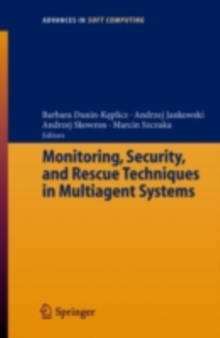
First Course on Fuzzy Theory and Applications PDF
by Kwang Hyung Lee
Part of the Advances in Intelligent and Soft Computing series
Description
Fuzzy theory has become a subject that generates much interest among the courses for graduate students.
However, it was not easy to find a suitable textbook to use in the introductory course and to recommend to the students who want to self-study.
The main purpose of this book is just to meet that need.
The author has given lectures on the fuzzy theory and its applications for ten years and continuously developed lecture notes on the subject.
This book is a publication of the modification and summary of the lecture notes.
The fundamental idea of the book is to provide basic and concrete concepts of the fuzzy theory and its applications, and thus the author focused on easy illustrations of the basic concepts.
There are numerous examples and figures to help readers to understand and also added exercises at the end of each chapter.
This book consists of two parts: a theory part and an application part.
The first part (theory part) includes chapters from 1 to 8.
Chapters 1 and 2 introduce basic concepts of fuzzy sets and operations, and Chapters 3 and 4 deal with the multi-dimensional fuzzy sets.
Chapters 5 and 6 are extensions of the fuzzy theory to the number and function, and Chapters 7 and 8 are developments of fuzzy properties on the probability and logic theories.
Information
-
Download - Immediately Available
- Format:PDF
- Publisher:Springer Berlin Heidelberg
- Publication Date:30/11/2006
- Category:
- ISBN:9783540323662
Other Formats
- Paperback / softback from £71.75
Information
-
Download - Immediately Available
- Format:PDF
- Publisher:Springer Berlin Heidelberg
- Publication Date:30/11/2006
- Category:
- ISBN:9783540323662










